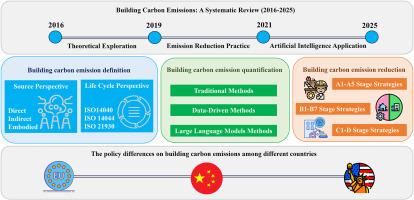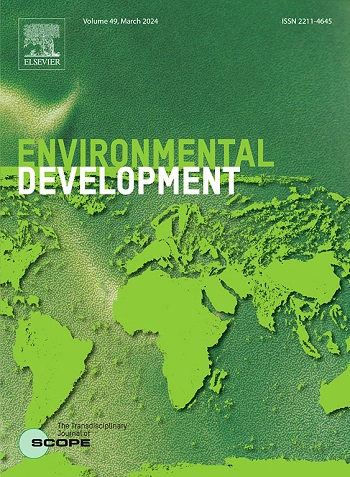Building carbon emissions (2016–2025): A PRISMA-based systematic review of definitions, quantification methods and policies
IF 5.3
2区 环境科学与生态学
Q2 ENVIRONMENTAL SCIENCES
引用次数: 0
Abstract
Managing carbon emissions from buildings requires integrated approaches across the entire lifecycle. Establishing such approaches depends on a clear understanding of key definitions for conceptual grounding, reliable quantification methods for measurement frameworks, and well-designed policies to guide effective reduction strategies. This paper analysed 111 publications on building carbon emissions from 2016 to 2025 using the PRISMA method. Key definitions have evolved from emission source perspectives to life cycle frameworks based on ISO 21930, which divides a building's life cycle into standardized stages. Past research has primarily focused on the B1-B7 stage, followed by the A1-A5 stage, while the C1-D remains understudied. Our review covers diverse quantification methods, including traditional estimation methods, data-driven prediction models (statistical, shallow machine learning, deep learning and hybrid), and emerging large language models. Our review reveals significant regional differences in policy approaches: European frameworks emphasize systematic standards, Chinese approaches centre on mandatory requirements, and American strategies focus on economic incentives. Research contributions are concentrated in China (29 %), Europe (14 %), and the United States (12 %). Drawing on the review, we also propose various reduction measures from a life cycle perspective. This review provides critical guidance for researchers, practitioners, and policymakers working to advance carbon neutrality goals.

建筑碳排放(2016-2025):基于prism的定义、量化方法和政策的系统回顾
管理建筑物的碳排放需要在整个生命周期中采用综合方法。建立这样的方法取决于对概念基础的关键定义的清晰理解,测量框架的可靠量化方法,以及指导有效减少战略的精心设计的政策。本文使用PRISMA方法分析了111份关于2016年至2025年建筑碳排放的出版物。关键的定义已经从排放源的角度发展到基于ISO 21930的生命周期框架,该框架将建筑物的生命周期划分为标准化的阶段。过去的研究主要集中在B1-B7阶段,其次是A1-A5阶段,而C1-D阶段仍未得到充分研究。我们的综述涵盖了各种量化方法,包括传统的估计方法,数据驱动的预测模型(统计,浅机器学习,深度学习和混合),以及新兴的大型语言模型。我们的回顾揭示了政策方法的显著地区差异:欧洲框架强调系统标准,中国方法侧重于强制性要求,而美国战略侧重于经济激励。研究贡献主要集中在中国(29%)、欧洲(14%)和美国(12%)。在检讨的基础上,我们亦从生命周期的角度提出多项减排措施。本综述为致力于推进碳中和目标的研究人员、从业人员和政策制定者提供了重要指导。
本文章由计算机程序翻译,如有差异,请以英文原文为准。
求助全文
约1分钟内获得全文
求助全文
来源期刊

Environmental Development
Social Sciences-Geography, Planning and Development
CiteScore
8.40
自引率
1.90%
发文量
62
审稿时长
74 days
期刊介绍:
Environmental Development provides a future oriented, pro-active, authoritative source of information and learning for researchers, postgraduate students, policymakers, and managers, and bridges the gap between fundamental research and the application in management and policy practices. It stimulates the exchange and coupling of traditional scientific knowledge on the environment, with the experiential knowledge among decision makers and other stakeholders and also connects natural sciences and social and behavioral sciences. Environmental Development includes and promotes scientific work from the non-western world, and also strengthens the collaboration between the developed and developing world. Further it links environmental research to broader issues of economic and social-cultural developments, and is intended to shorten the delays between research and publication, while ensuring thorough peer review. Environmental Development also creates a forum for transnational communication, discussion and global action.
Environmental Development is open to a broad range of disciplines and authors. The journal welcomes, in particular, contributions from a younger generation of researchers, and papers expanding the frontiers of environmental sciences, pointing at new directions and innovative answers.
All submissions to Environmental Development are reviewed using the general criteria of quality, originality, precision, importance of topic and insights, clarity of exposition, which are in keeping with the journal''s aims and scope.
 求助内容:
求助内容: 应助结果提醒方式:
应助结果提醒方式:


